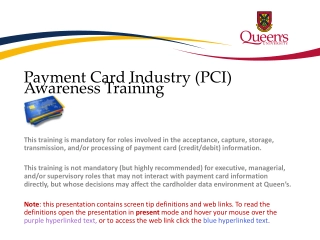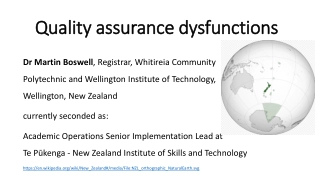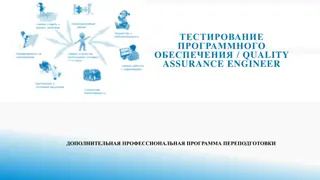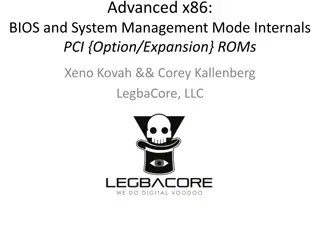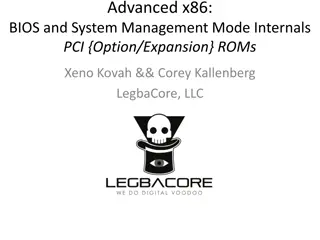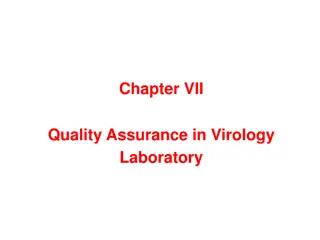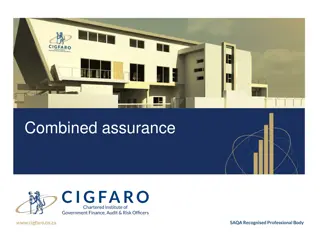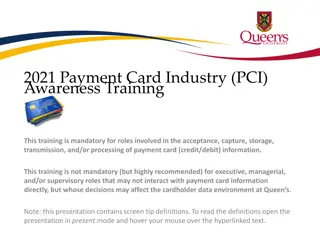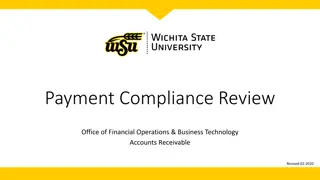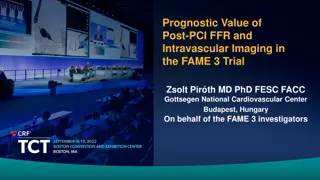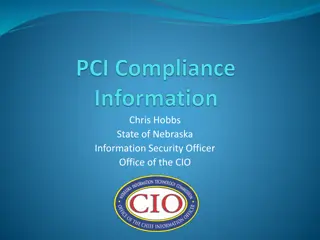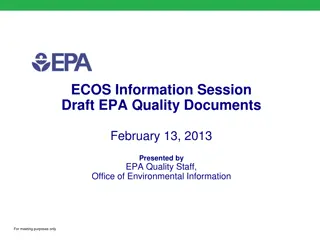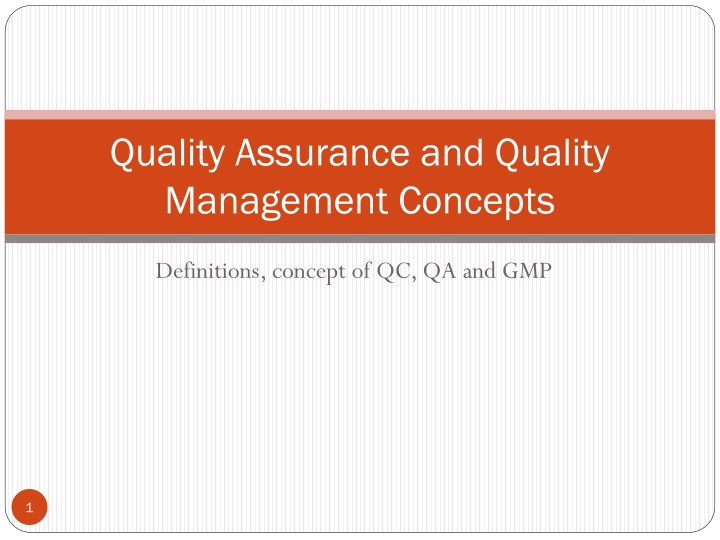
Quality Management Concepts and Definitions in Pharmaceutical Industry
This content provides definitions and concepts related to quality assurance, quality control (QC), quality management (QM), Good Manufacturing Practices (GMP), and standard operating procedures (SOP) in the pharmaceutical industry. It covers terms like Active Pharmaceutical Ingredient (API), starting material, validation, and explains the interrelationship between Total Quality Management (TQM), Quality Assurance (QA), GMP, and QC. Additionally, it discusses the role of quality assurance as a management tool according to WHO standards.
Download Presentation

Please find below an Image/Link to download the presentation.
The content on the website is provided AS IS for your information and personal use only. It may not be sold, licensed, or shared on other websites without obtaining consent from the author. If you encounter any issues during the download, it is possible that the publisher has removed the file from their server.
You are allowed to download the files provided on this website for personal or commercial use, subject to the condition that they are used lawfully. All files are the property of their respective owners.
The content on the website is provided AS IS for your information and personal use only. It may not be sold, licensed, or shared on other websites without obtaining consent from the author.
E N D
Presentation Transcript
Quality Assurance and Quality Management Concepts Definitions, concept of QC, QA and GMP 1
Learning Outcomes: The learners will be able to Know the various terms in Quality Assurance Subject Know the definitions of various terminologies in Quality Assurance Subject 2
Some Definitions Some Definitions ACTIVE PHARMACEUTICAL INGREDIENT (API) Any substance or mixture of substances intended to be used in the manufacture of a pharmaceutical dosage form and that, when so used, becomes an active ingredient of that pharmaceutical dosage form. Such substances are intended to furnish pharmacological activity or other direct effect in the diagnosis, cure, mitigation, treatment, or prevention of disease or to affect the structure and function of the body. 3
standard operating procedure (SOP) An authorized written procedure giving instructions for performing operations not necessarily specific to a given product or material (e.g. equipment operation, maintenance and cleaning; validation; cleaning of premises and environmental control; sampling and inspection). Certain SOPs may be used to supplement product- specific master and batch production documentation. starting material Any substance of a defined quality used in the production of a pharmaceutical product, but excluding packaging materials. validation Action of proving, in accordance with the principles of GMP, that any procedure, process, equipment, material, activity or system actually leads to the expected results (see also qualification). 4
Quality Management (QM) A quality management system is a management technique used to communicate to employees what is required to produce the desired quality of products and services and to influence employee actions to complete tasks according to the quality specifications. Good Manufacturing Practices (GMP) Performance standards that WHO and many national governments established for pharmaceutical manufacturers covering, for example, personnel, facilities, packaging, and quality control. 5
INTERRELATIONSHIP TQM QA GMP QC 6
Quality Assurance: a Management Tool According to WHO, quality assurance is a wide-ranging concept covering all matters that individually or collectively influence the quality of a product. With regard to pharmaceuticals, quality assurance can be divided into major areas: development, quality control, production, distribution, and inspections. ISO 9000 defines it as "part of quality management focused on providing confidence that quality requirements will be fulfilled It is Sum of all activities and responsibilities required to ensure that the medicine that reaches the patient is safe, effective, and acceptable to the patient. 7
DISTRIBUTION Development INSPECTION Areas of QA QC PRODUCTION 8
Product meets specifications & mfd as per std. of GMP To identify & prepare necessary SOP s to control quality To ensure quality policies adopted by a company are followed Responsibilities of QA Assess the operations continually, advise, guide for compliance of internal & external regulations Responsibility of quality monitoring or audit function 9
Quality assurance framework DOCUMENT REVIEW INSPECTION OF LOCAL/IMPORTED PRODUCT SAMPLES, MANUFACTURING SITES, MARKET PLACE DATA ANALYSIS AND EVALUAT ION DECISION MAKING & ENFORCEMENT PRODUCT TESTIING REPORTING 10
DETERMINANTS OF PHARMACEUTICAL QUALITY 11
PRACTICAL APPROACHES FOR QA Procedure to establish comprehensive QA program divided into 3: 1. Procedures to ensure that quality standard medicine products are purchased. These are Careful product selection Careful supplier selection Certificate of analysis for each batch of product Certification of GMP Batch certification (like WHO ) Inclusion of detailed product quality specifications in contract 12
2. Procedures to verify that shipped goods meet specifications: Pre and post shipment inspection Analytical Pharmaceutical testing 3. Procedures to monitor & maintain the quality of pharmaceuticals from the moment they are received until the medicine is finally consumed by the patient.: Proper storage & distribution procedures Appropriate dispensing Instructions to the patient on proper use of medication Product defect and pharmacovigilance reporting programs 13


